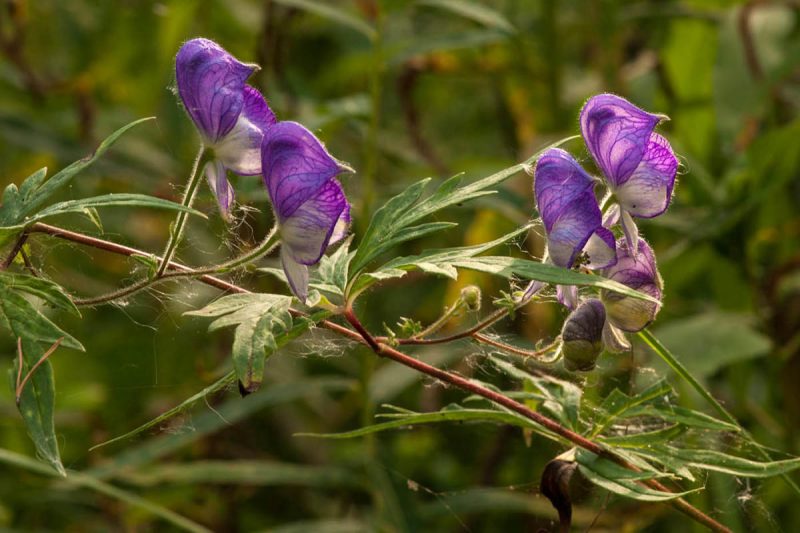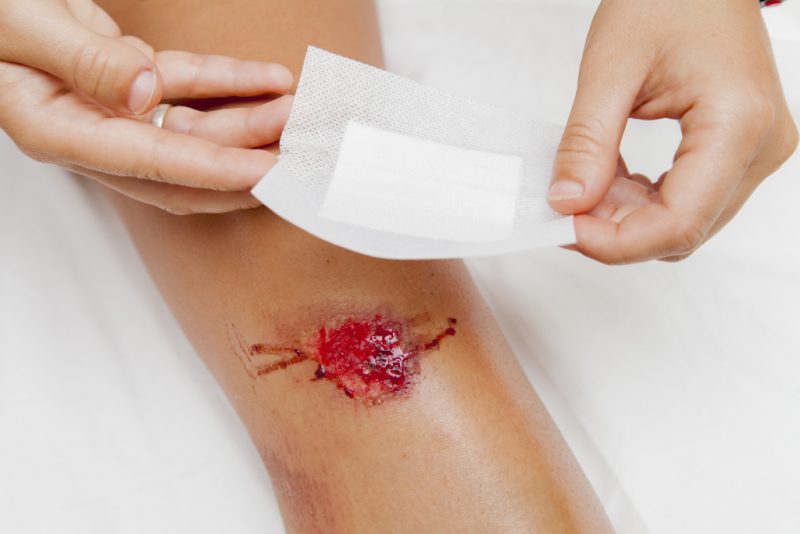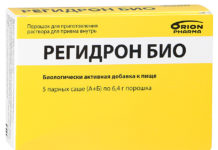The wrestler, or aconite Dzhungar, is a perennial herb that has been used since ancient times in everyday life and medicine. Despite its toxic properties, it promotes wound healing, relieves inflammation and reduces soreness. Aconite is also actively used as part of complex therapy in the treatment of heart pathologies and oncology.
Material Content:
The healing properties of a poisonous plant
The composition of aconite contains a complex of essential oils, organic acids, phytoncides, alkaloids, flavonoids and other active substances. Together, these components have antiseptic, analgesic and local irritating effects.

Due to this, medicines based on this plant are used in such cases:
- therapy of purulent wounds and inflammations;
- with dislocations, bruises, sprains and fractures;
- to relieve pain with arthritis, gout, rheumatism;
- in the treatment of nervous disorders and mental disorders, such as depression, hysteria, low mood, etc .;
- with pronounced headaches, including migraines;
- the medicine is prescribed to increase immunity in acute respiratory viral infections, tonsillitis, colds, pulmonary diseases;
- in the treatment of gastrointestinal diseases: gastritis, ulcers, intestinal colic, flatulence;
- finds application in combination with chemotherapy for the treatment of cancer;
- as an antidote for poisoning with fungi and other plants;
- to reduce itching in skin diseases;
- in the treatment of sexually transmitted diseases.
The therapeutic effect does not occur immediately and depends on the dose and regularity of use. In large quantities, aconite is deadly, because the substances contained in it can accumulate in the body.
Therefore, before use, you must always consult a doctor.
What does a wrestler look like and where does he grow
Dzhungarsky aconite grows mainly in the wild, preferring the fertile soils of highlands or river reservoirs. It is common in the Northern Hemisphere, so it can easily be found in Europe, Asia, North America.

At its core, it is a large bush about 1.5 - 2 m high with violet-bluish flowers, similar to buttercups. Inflorescences resemble clusters or brushes located in the form of a corolla, and the flowers themselves can vary in shape, size and even the number of petals. The stem is most often straight, densely strewn with dark green dissected-rounded leaves. The root resembles a chain of fused tubers. Scientists have about 300 species of aconite, 75 of which can be found in Russia.
Application in traditional medicine
Aconite has long been used as a poisonous substance. They were greased with arrows and spears, because the alkaloids contained in the plant in large quantities have a neuroparalytic effect on humans.

Later, the plant began to be used to treat pain, nervous disorders, insomnia and stomach diseases. The root of aconite was dried, ground into flour and added to alcohol tinctures and wine. Now aconite is used mainly in traditional medicine and homeopathic medicines. Finding it on the free market is very difficult, because the substance requires special care in use.
How to take to treat cancer

- In half a glass of vodka add 2.5 g of crushed dry root of aconite, stir and insist for about 2 weeks in a dark, cool place.
- After that, the infusion is filtered if necessary and then stored in the refrigerator.
- The resulting fluid is wetted with tissue or gauze and applied to cancer ulcers 3 times a day.
Another recipe is for oral administration. In 0.5 l of vodka add 1 tsp. aconite powder and also insist for two weeks. And it is advisable to shake this mixture regularly. After the allotted time, the medicine is used according to the following scheme. one
- 10 days there is an increase in dose, starting from 1 drop and reaching 10.
- The next decade take 10 drops per dose.
- The last ten days, the dose is gradually reduced, bringing to 1 drop.
The medicine is taken 3 times a day, diluted with water. The full course is a month, after which a 30-day break is made. In total, it is advisable to take seven such courses.
For pain

For people who suffer from severe pain, this recipe is suitable:
- 20 g of dry matter pour 0.5 l of vodka.
- Insist for a week, then strain through cheesecloth.
- Use as rubbing for the treatment of rheumatic or joint pain 1 time per day until the symptoms disappear completely.
For migraines, it is recommended to dilute 10 drops of tincture of aconite Dzhungarsky in a glass of water and drink every morning for a month.
If the pain in the tooth bothers you, you can put 1 drop on the gum and rub it lightly.
Before taking aconite Dzungarian with the aim of stopping pain, you should consult a doctor.
Use for wounds

To treat wounds or purulent formations, a decoction is prepared. In 250 ml of boiling water pour 2 g of crushed aconite and simmer for 10 - 15 minutes. Then the liquid is cooled and filtered. The resulting solution is washed wounds several times a day until the condition improves.
Tincture of aconite Dzhungarsky: instructions for use
To find out how to take aconite Dzungarian, just read the instructions carefully. After all, a drug has a different concentration of the active substance. Most often, 10% of tinctures are found, which is why they are prescribed by doctors.

The agent is applied dropwise three times a day. The required dose is diluted in a large amount of water and drunk 20-30 minutes before a meal. The duration of treatment and the amount is prescribed only by the doctor individually.
Use alone can lead to serious poisoning of the body. Therefore, even during treatment, it is recommended to take herbal preparations that neutralize the action of toxins.
The open bottle must be stored in the refrigerator, out of the reach of children. Pregnant and lactating women are forbidden to take the medicine even externally. If the product gets on the skin or on the mucous membranes, rinse immediately with water.
People's advice:Tibetan lofant
Contraindications and side effects
The plant contains poison, so there are strict contraindications to it.

You can not use the wrestler in any form in such cases:
- under reduced pressure;
- severe diseases of the kidneys and liver;
- children and adolescents under 18 years of age;
- pregnant and lactating;
- people suffering from severe allergies who previously suffered anaphylactic shock;
- having individual intolerance to the drug;
- suffering from alcohol / drug addiction.
Read also:Rhodiola rosea: medicinal properties
In no case should you independently increase the dose of the drug. If you experience dry mouth, burning of the skin, severe dizziness and / or vomiting, you should immediately consult a doctor. If a person has an increase or decrease in body temperature, pallor of the skin and clouding of consciousness - this may indicate poisoning. In this case, medical assistance is needed immediately.












